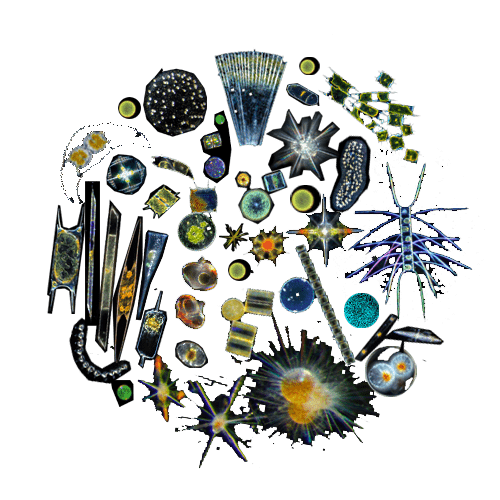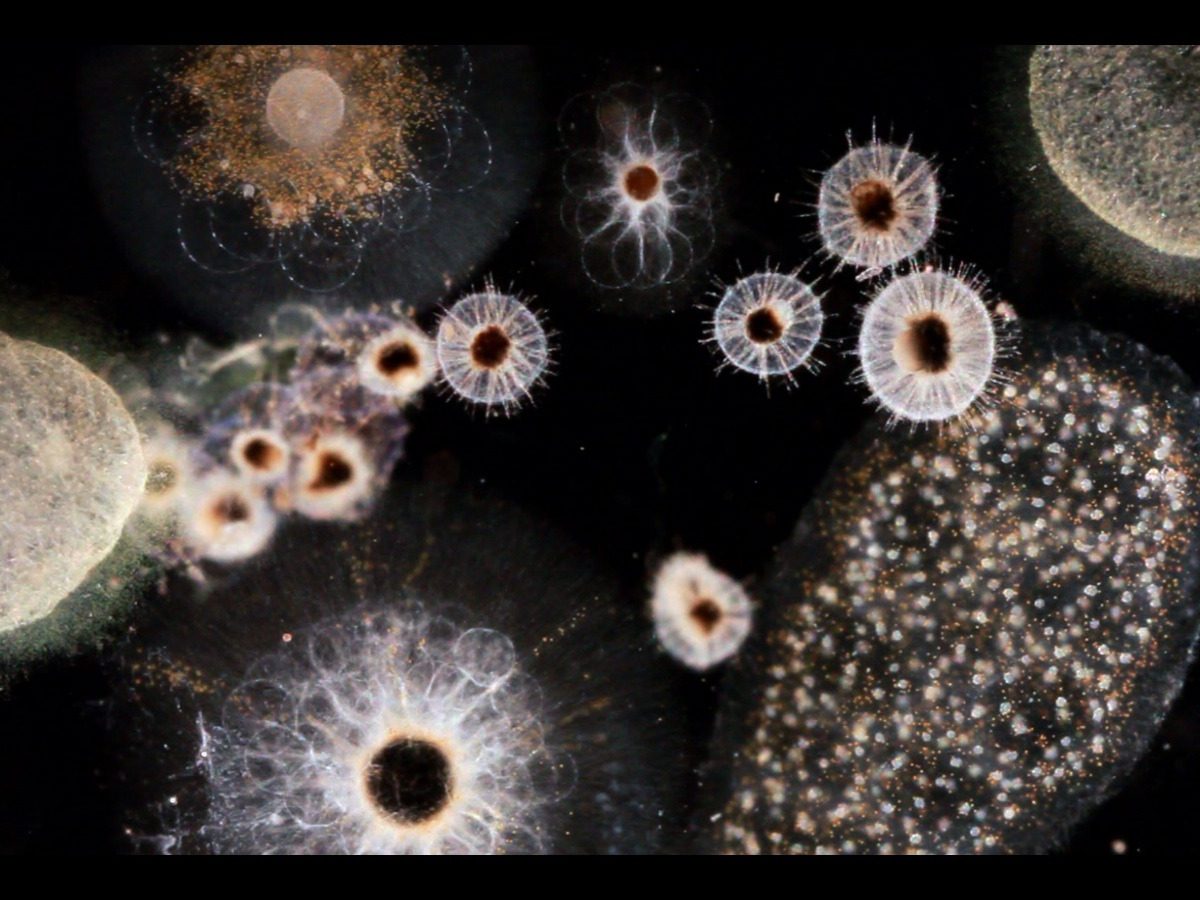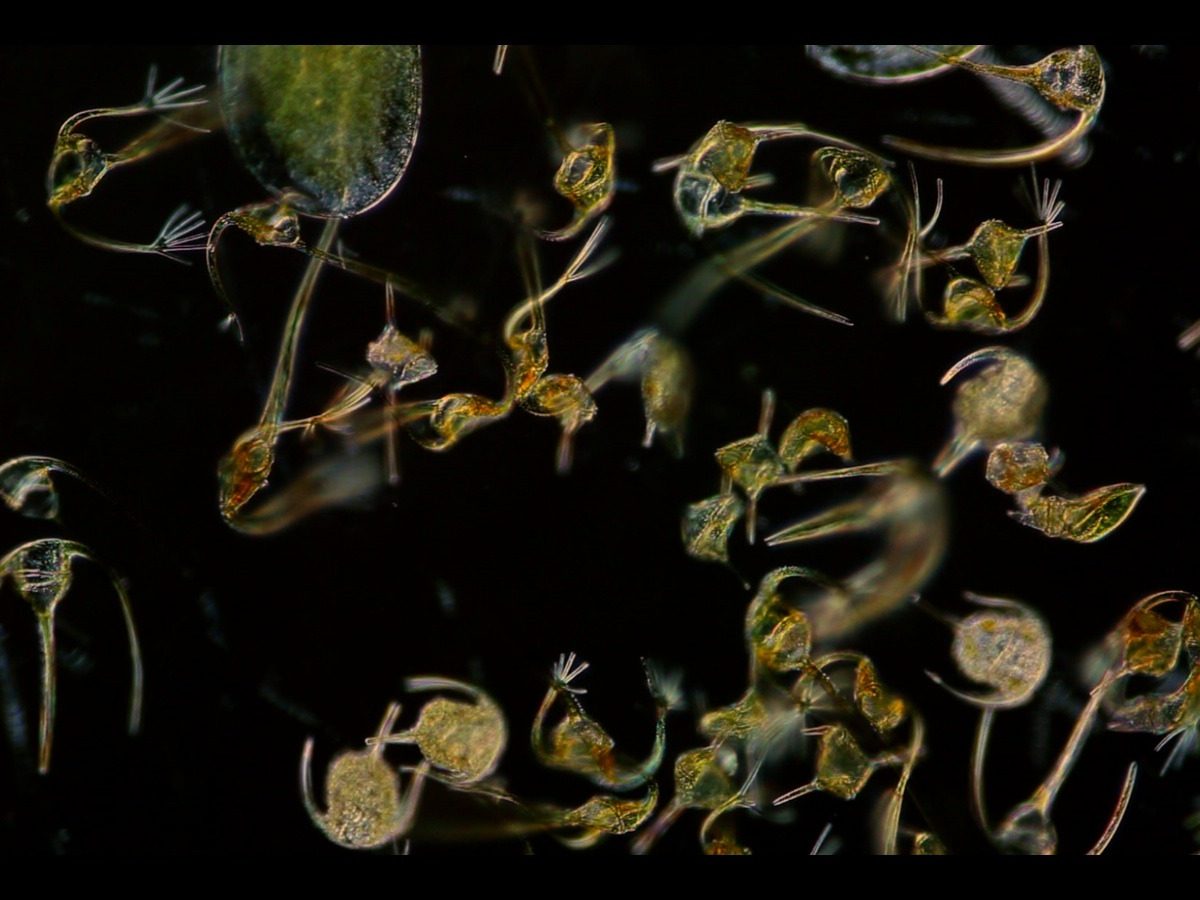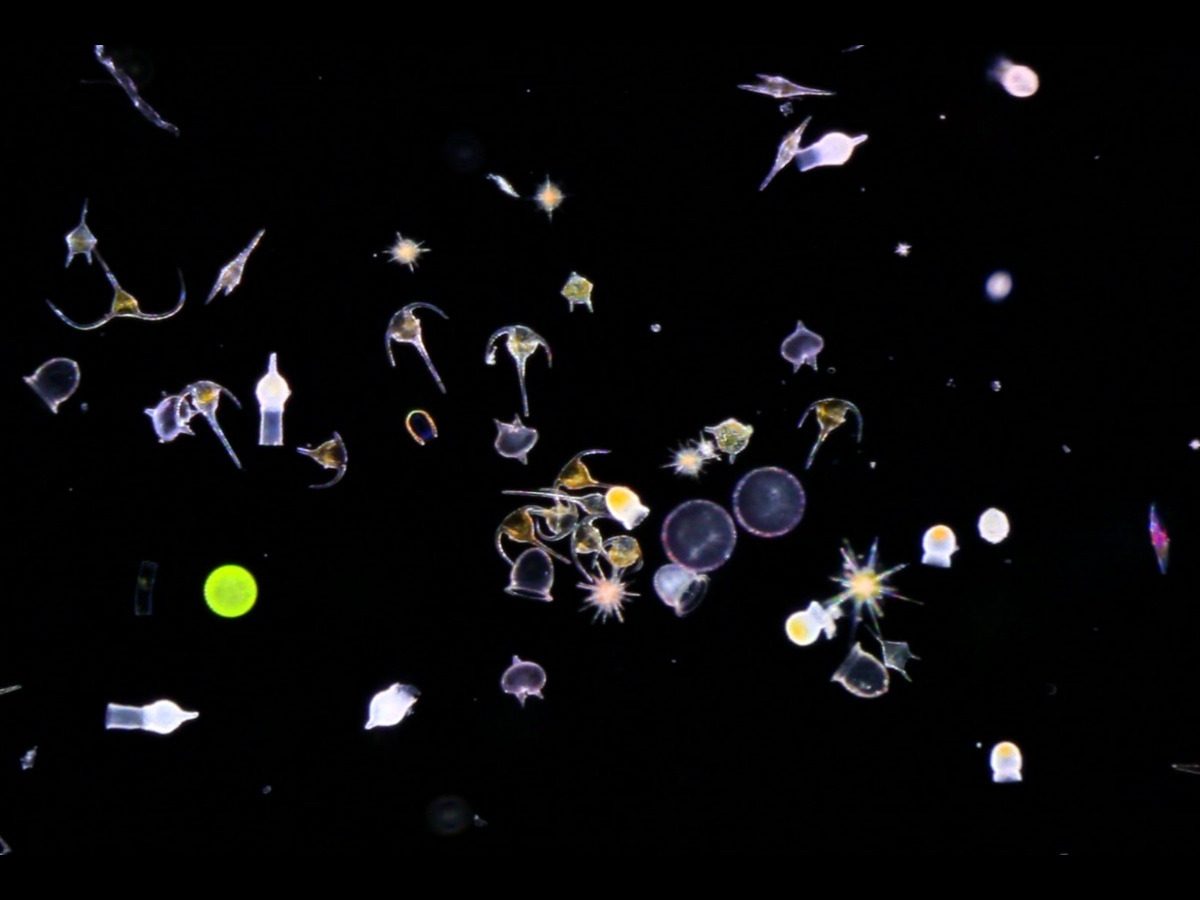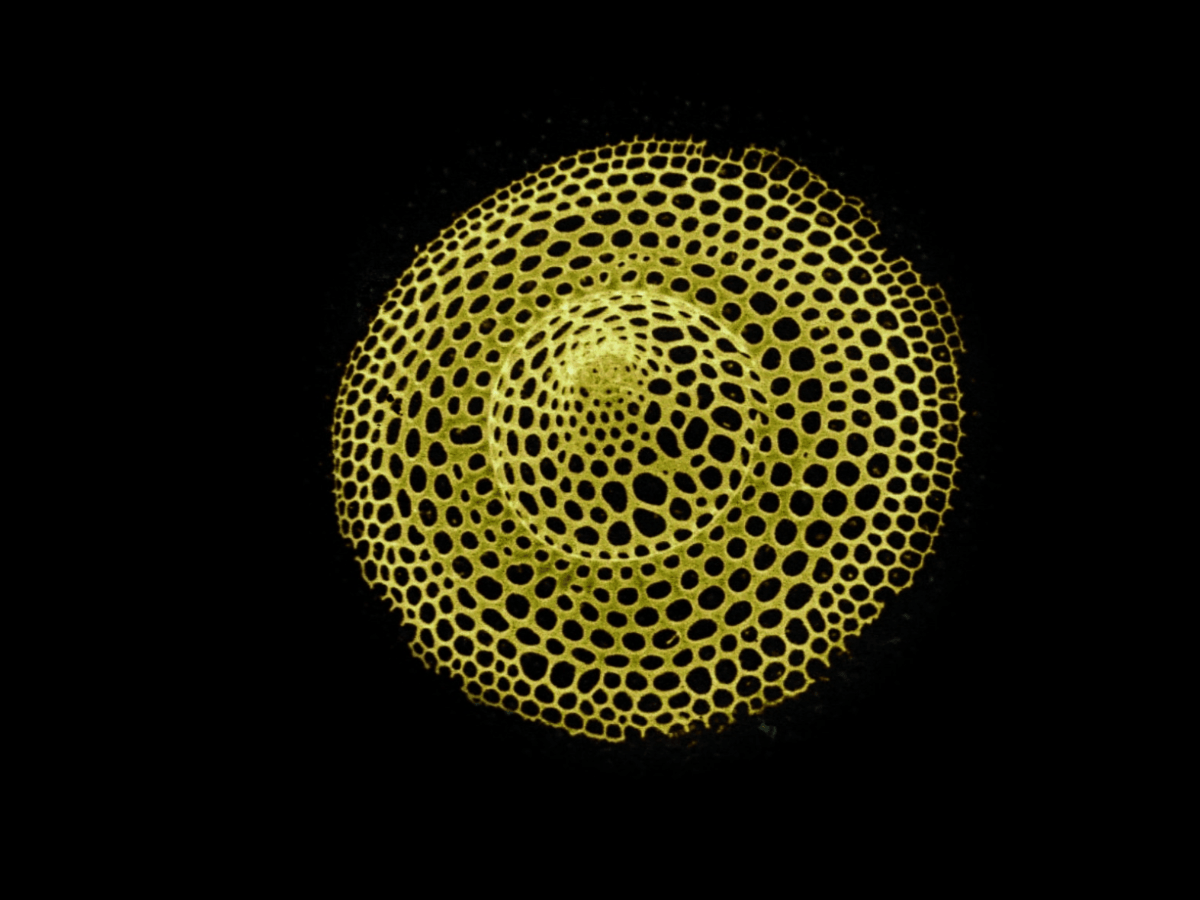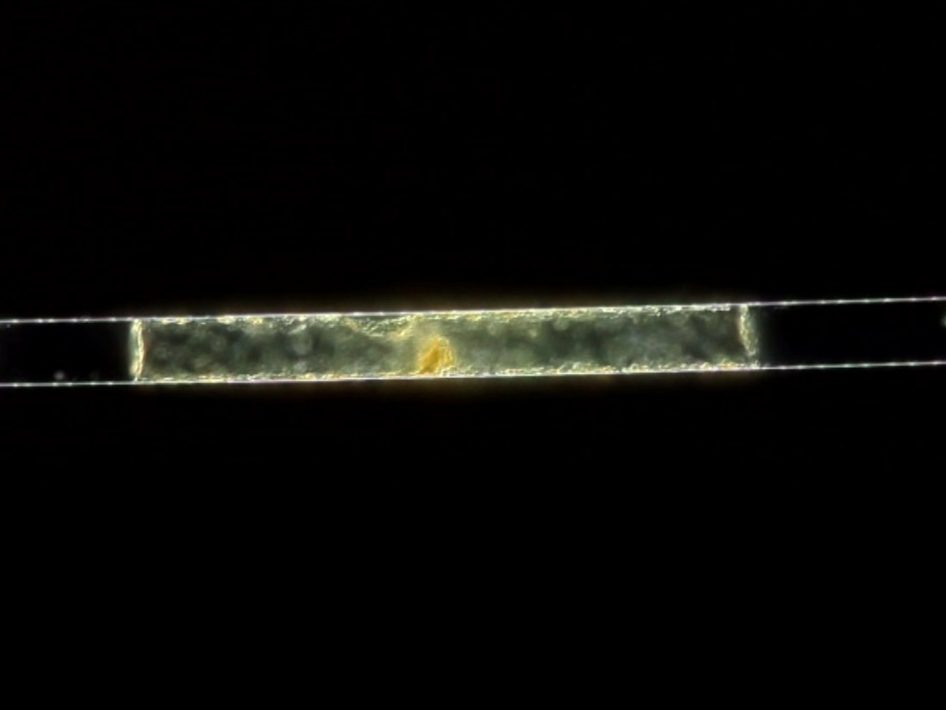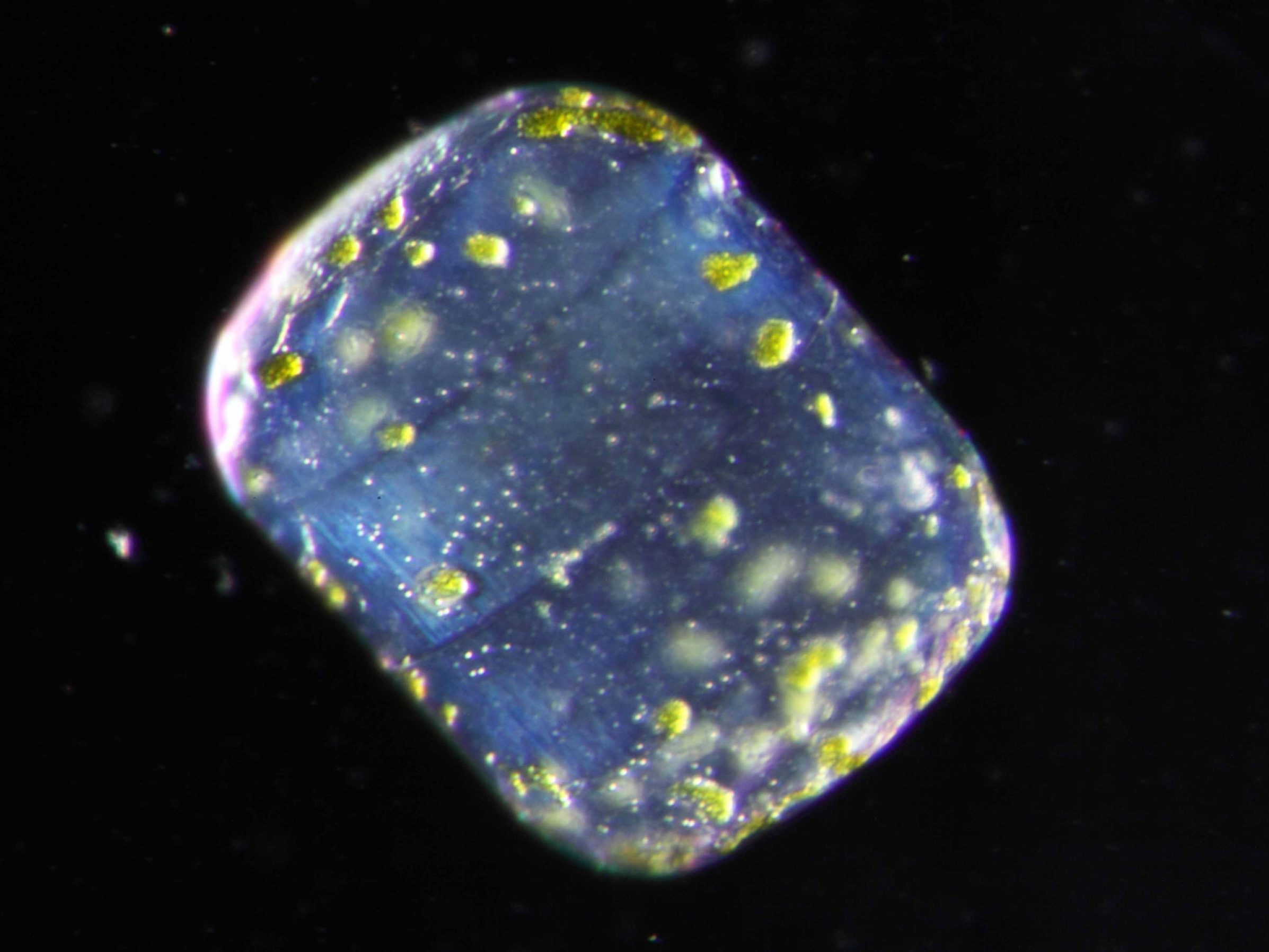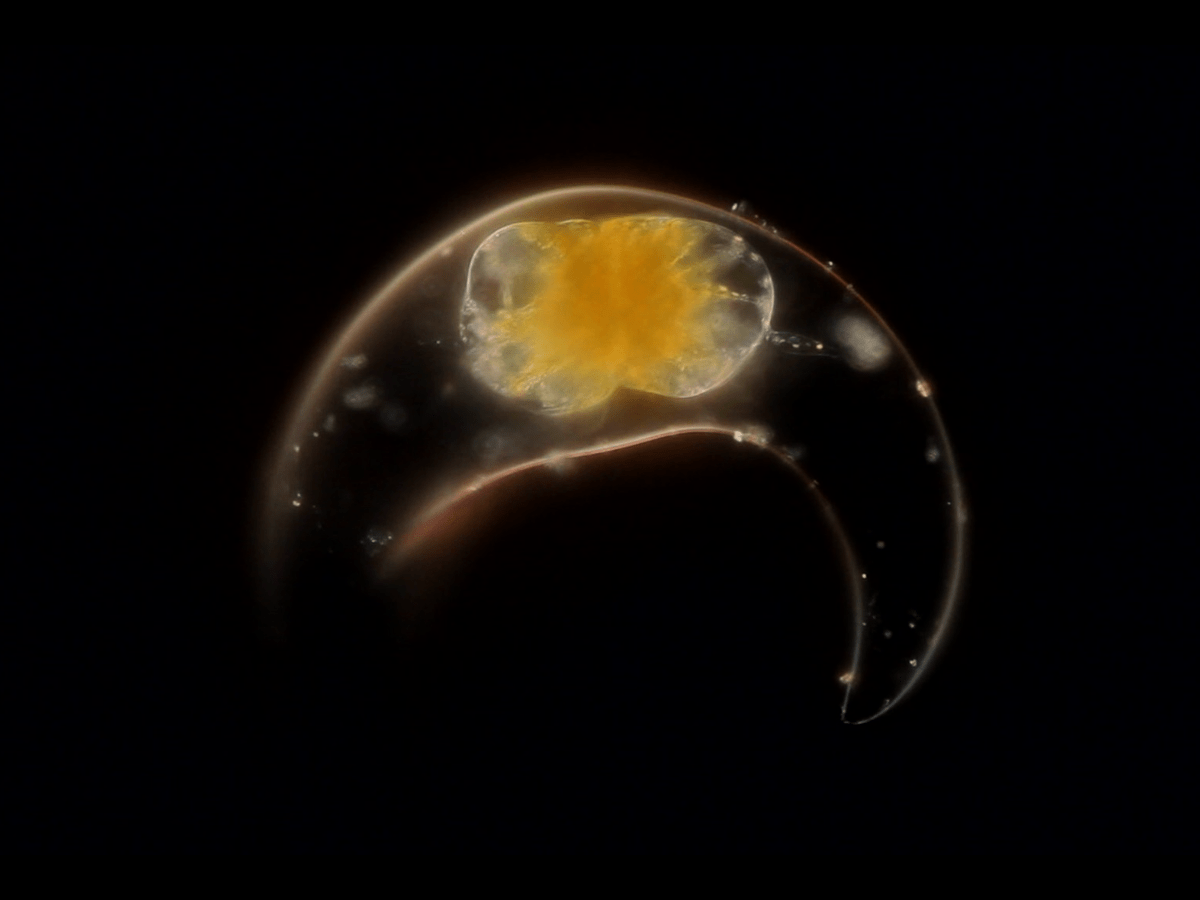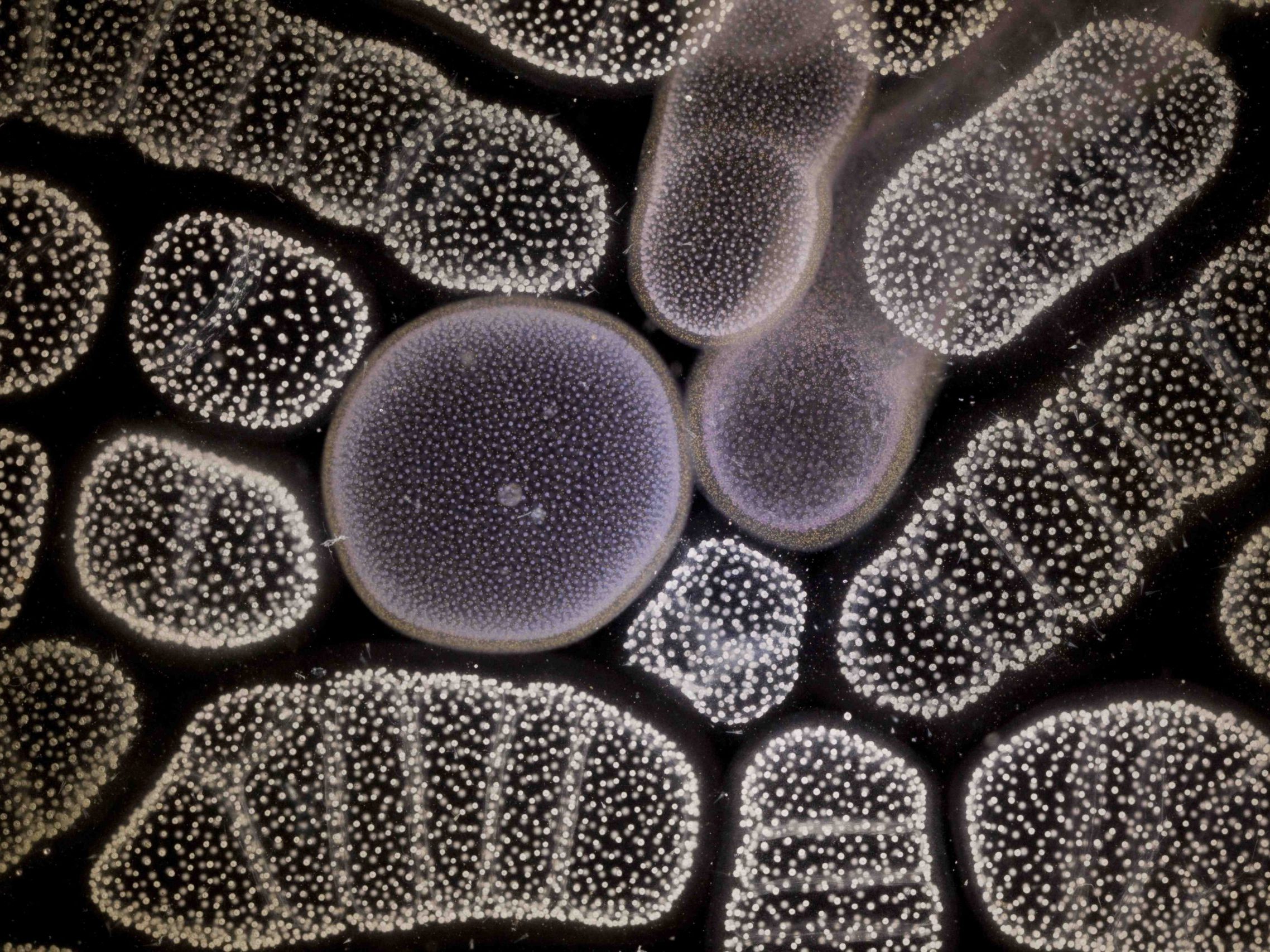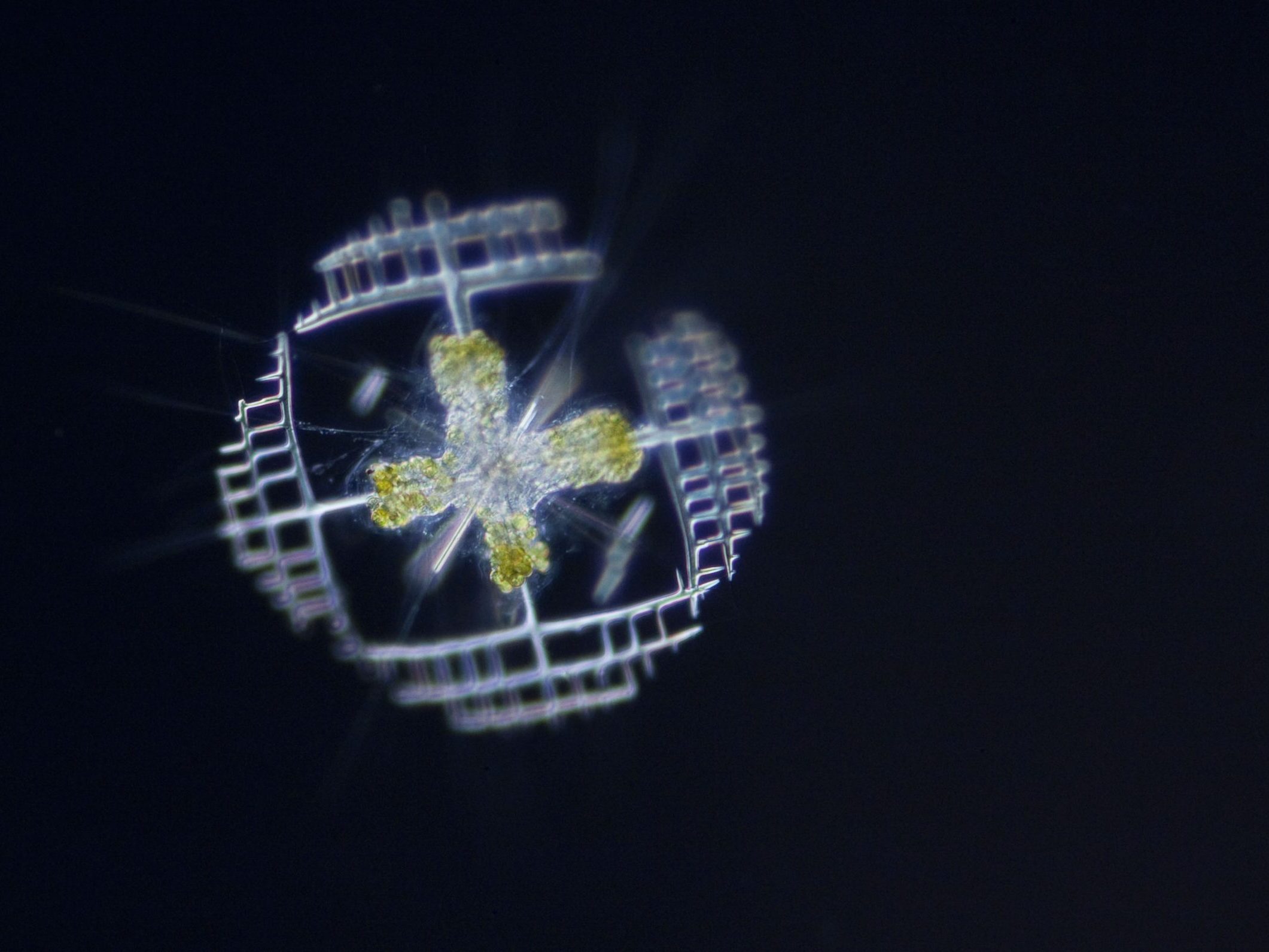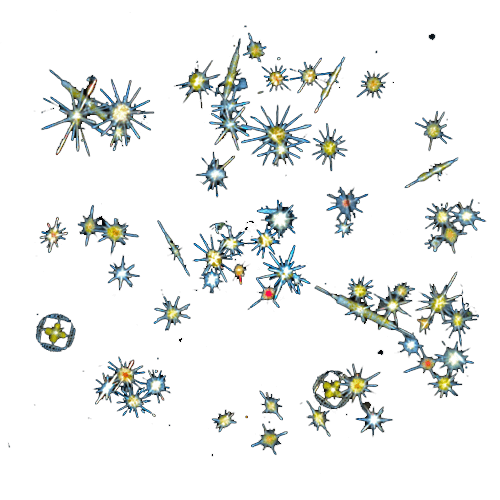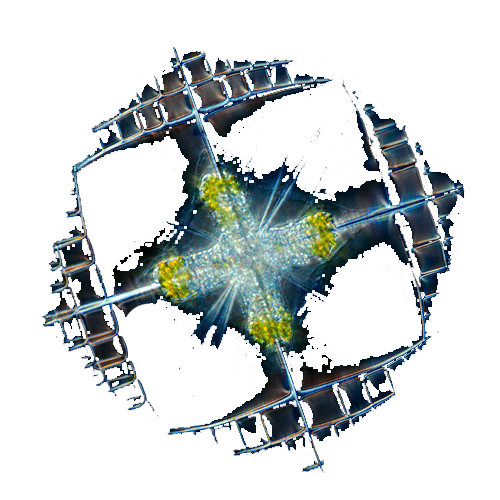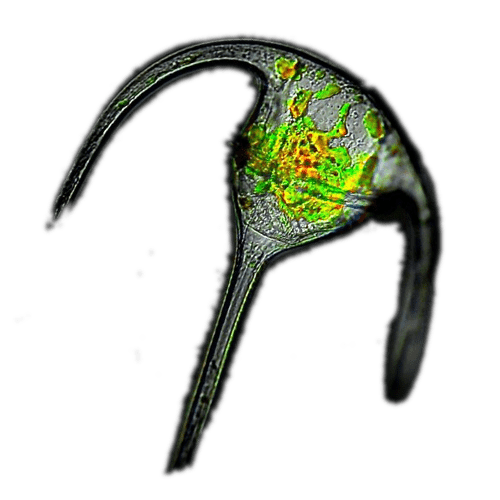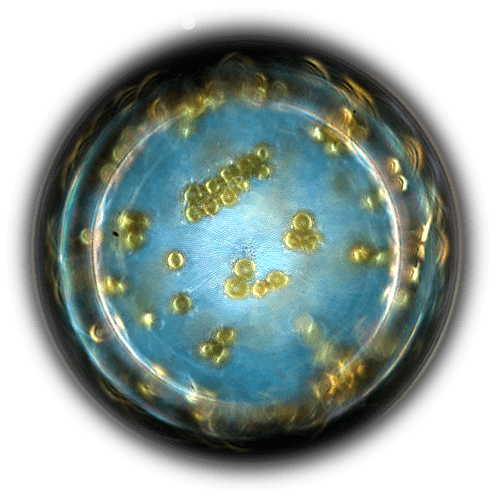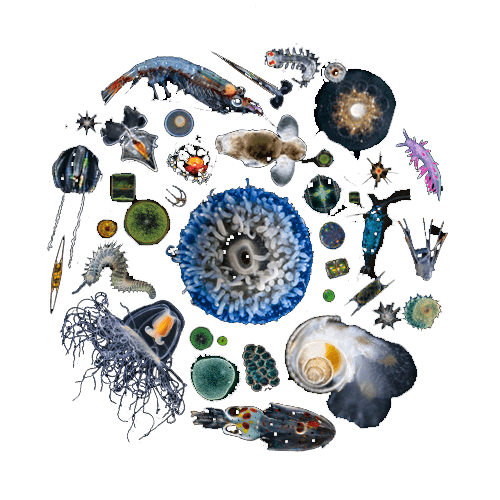In this episode
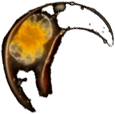 DinoflagellatePyrocystis elegans
DinoflagellatePyrocystis elegans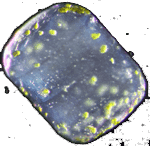 Centric diatom
Centric diatom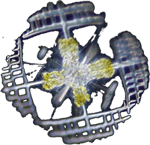 AcantharianLithoptera mulleri
AcantharianLithoptera mulleri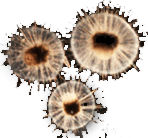 RadiolarianAulacantha scolymantha
RadiolarianAulacantha scolymantha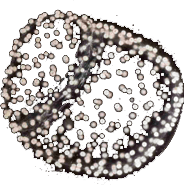 RadiolarianCollozum inerme
RadiolarianCollozum inerme
Photos
Narration
Protists are single cell organisms with a nucleus like our own cells. They appeared more than a billion years ago and are the ancestors of all plants and animals. Protists come in amazing shapes and colors. Protists have unusual names such as acantharians, coccolithophores, dinoflagellates radiolarians or diatoms. Some can be seen with the naked eye, but most are microscopic.
The world of protists is immense – millions of different species – but is often overlooked. In appearance and behavior protists are the most diverse of all living things. Some are big eaters, swallowing other cells thanks to their exceptionally flexible membranes. Others use specialized organelles called chloroplasts to carry on photosynthesis like plants.
There are also protists that behave like plants and animals at the same time. Protists build shells around their membrane from all sorts of material, including silicates, calcium, strontium or cellulose. They were the first architects of the planet.
For a billion years, their tiny shells have been sinking to the bottom of the sea, building mountains. These deep sea mountains formed the continents. Today we can find fossilized protist shells in the stones of houses and cathedrals.
Share this on
Production
CNRS
Original Idea
Christian Sardet
Director
Noé Sardet, Sharif Mirshak
Texts
Christian Sardet
Images
Christian Sardet, Noé Sardet, Sharif Mirshak
Editing
Sharif Mirshak, Noé Sardet
Sound mix
Romain Strugala
Voice
Gregory Gallagher
Sound Engineer
Cristobal Urbina
Translation
Theodore Rosengarten
Creative Commons Licence :
Attribution Non-Commercial
No Derivative

